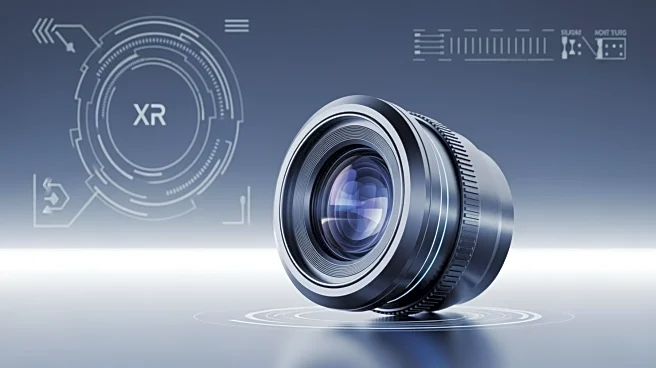What's Happening?
Pixelligent Technologies LLC has launched a new product line called PixMicro, aimed at advancing the capabilities of extended reality (XR) devices, next-generation displays, and optical sensors. The PixMicro line features
high-index micro-imprintable formulations that offer unmatched transparency, ultra-low haze, and refractive indices up to 1.90. These solvent-free formulations are designed to improve the performance of sensors, microlens arrays, waveguides, 3D printed optics, and diffractive optical elements. The new product line is compatible with both glass and plastic substrates and can be integrated into existing manufacturing processes. According to Craig Bandes, CEO of Pixelligent, the PixMicro line provides manufacturers with the tools needed to create devices that will define the next wave of immersive technology.
Why It's Important?
The introduction of the PixMicro product line is significant as it addresses the growing demand for advanced materials in the rapidly expanding markets of optical sensors, XR devices, and IT OLED. These technologies are expected to be among the fastest-growing sectors in consumer and industrial markets. By offering high-performance materials that enhance visual clarity and reduce form factors, Pixelligent positions itself as a key player in the next generation of display innovation. This development could lead to more efficient and cost-effective production of high-performance devices, benefiting manufacturers and consumers alike.
What's Next?
As the demand for XR and optical sensor technologies continues to rise, manufacturers are likely to adopt PixMicro formulations to enhance their product offerings. This could lead to increased competition in the market as companies strive to integrate these advanced materials into their devices. Additionally, Pixelligent's continued innovation in high-index nanocomposites may drive further advancements in the industry, potentially leading to new applications and markets for these technologies.
Beyond the Headlines
The launch of PixMicro highlights the importance of material science in the evolution of technology. As devices become more sophisticated, the need for materials that can meet extreme performance requirements becomes critical. This development underscores the role of companies like Pixelligent in pushing the boundaries of what is possible in electronics and optics, potentially leading to breakthroughs in other fields such as augmented reality, virtual reality, and advanced manufacturing.












